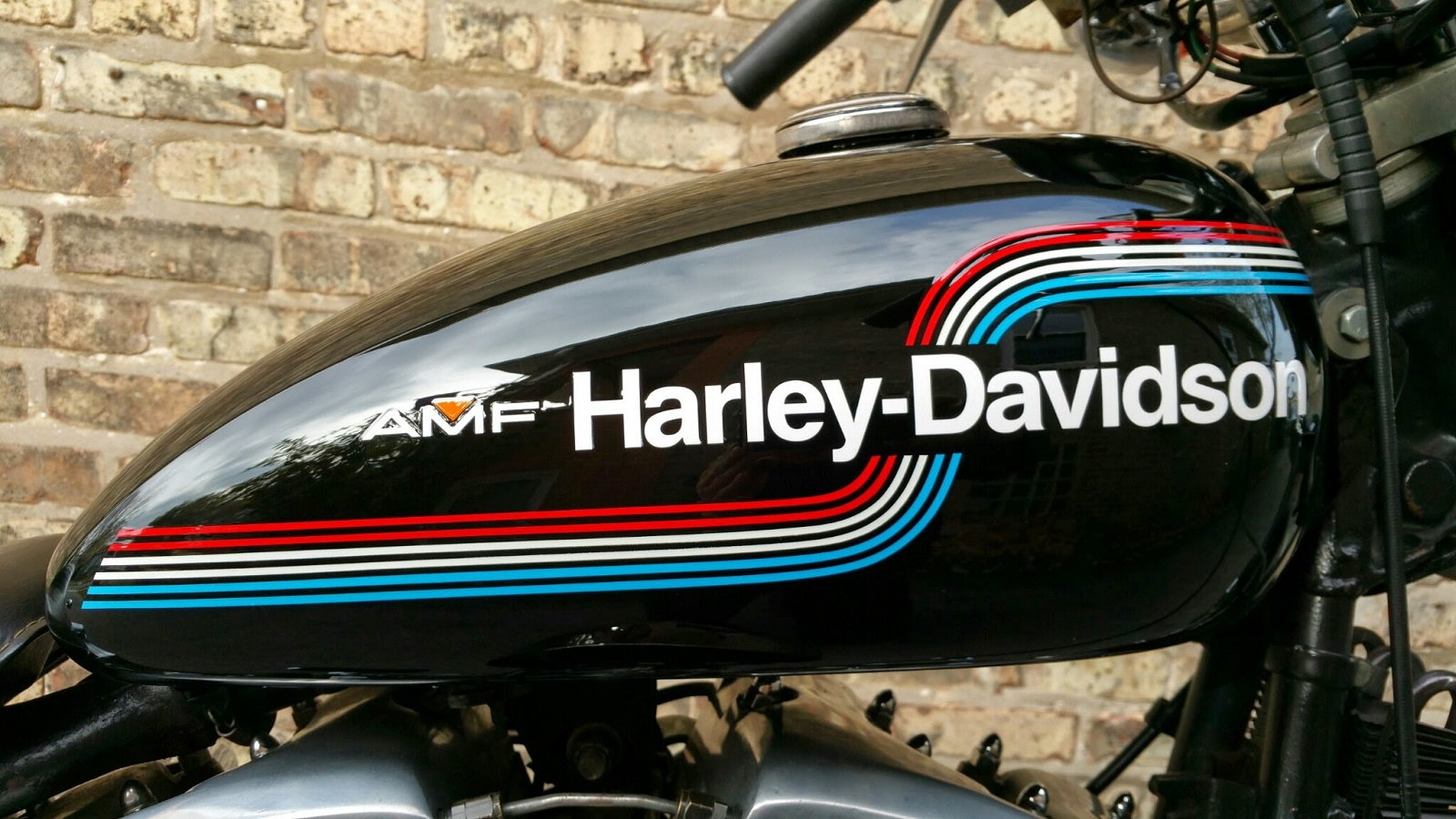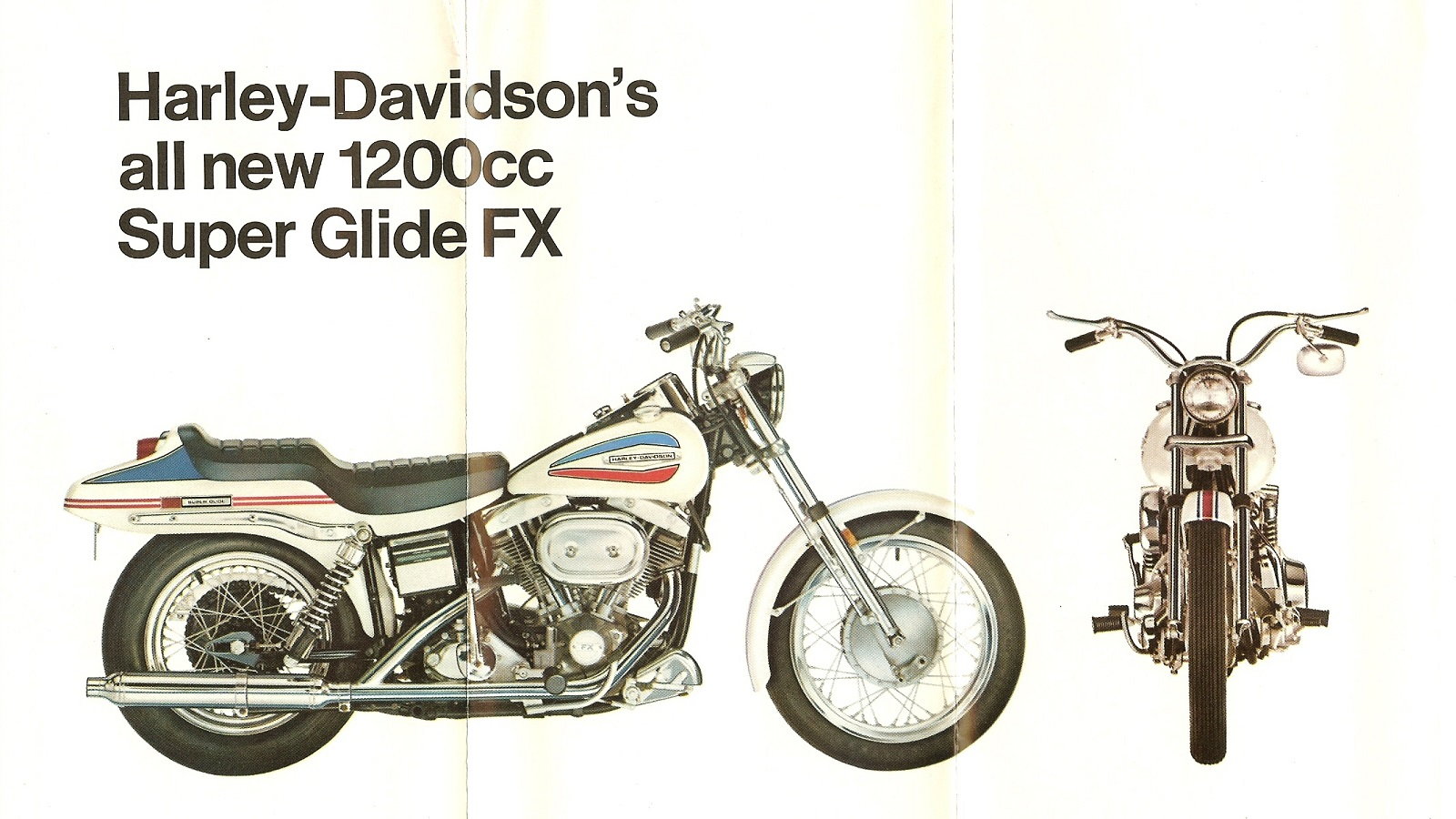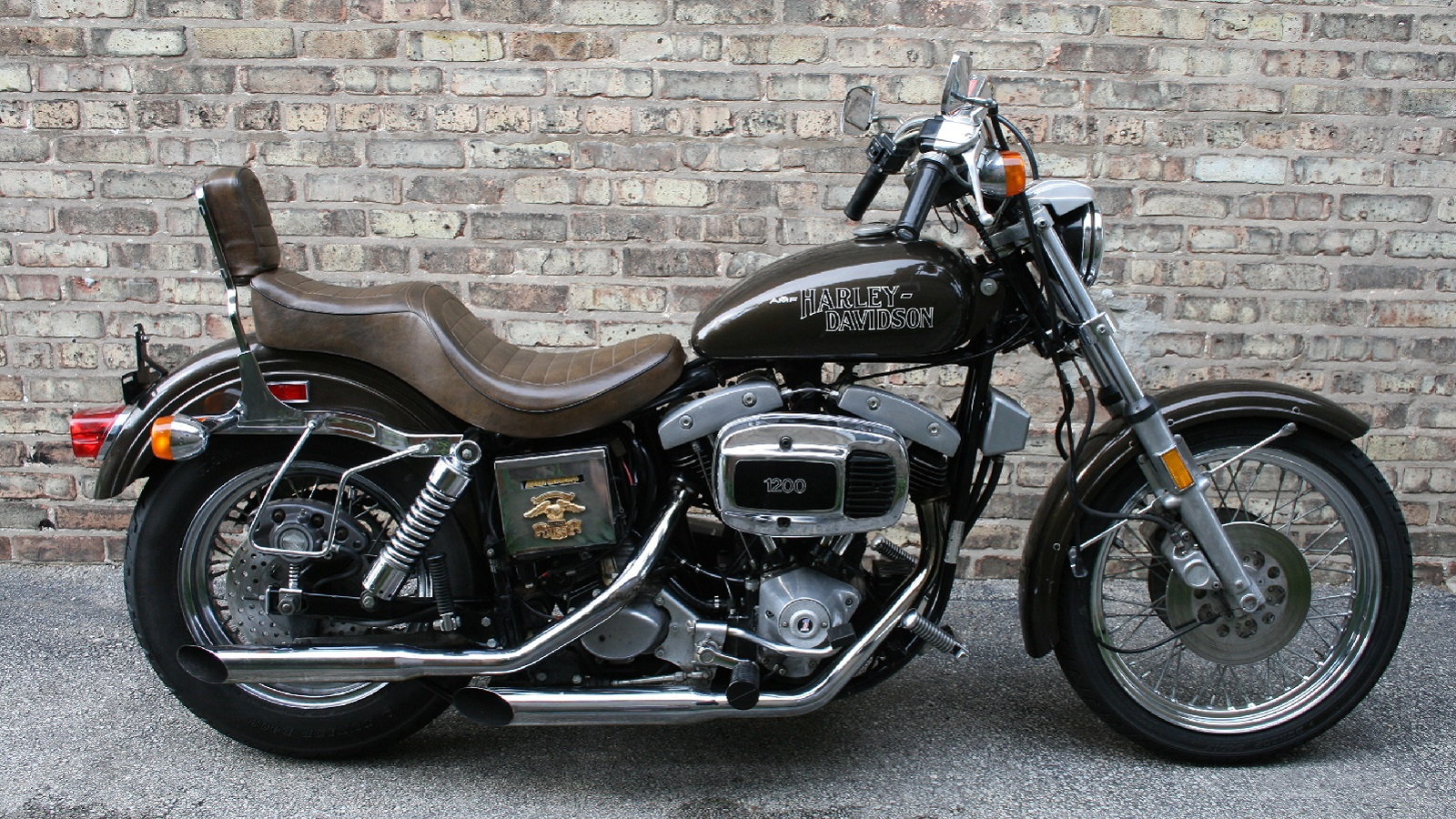9 Facts About the Original 1971-85 Harley-Davidson Super Glide
While the original Super Glide wasn't the best looking Harley-Davidson motorcycle, the factory customization of the big twin platform proved to be a successful formula that H-D still uses today. Here are a few facts about that original Super Glide motorcycle line.


















1. Under New Ownership
In 1969, Harley-Davidson was in bad shape financially, and agreed to a buyout from American Machine and Foundry (AMF), the company largely known for its bowling alleys. With the buyout, AMF provided money for new model development and a new production facility in York, Pennsylvania in 1973 with new tooling for manufacturing. Under AMF ownership quality suffered as the corporate bosses tried to make Harley more competitive with the Japanese and European imports, but one of the bright spots during the "AMF Era" was the new FX Super Glide introduced in 1971. The bones and drivetrain of the Electra Glide tourer were combined with parts from the Sportster to create a big twin cruiser that was lighter and sportier, and more like what guys were building in their garages.
2. Iconic Design
Willie G. Davidson took over as styling director of the company his family founded in 1963 and was the driving force behind the design of the Super Glide. His vision was to create a contemporary motorcycle that fed off of the American chopper craze and develop a new cutting-edge platform dubbed the FX (factory experimental) that would allow for "factory customs" to be built upon for years to come. Many consider the Super Glide and other efforts of Willie G. to be largely responsible for breathing new life into the Harley-Davidson brand. Willie G, along with 13 other Harley executives, were the ones who came up with the money to purchase the H-D company back from AMF in 1981 and make it the powerhouse it is now.
3. Original Specs
The Super Glide was equipped with the then current 74 cubic-inch shovelhead V-twin engine and used the same frame and rear suspension as the Electra Glide model, but swapped in the smaller front forks, headlight and 19-inch front wheel of the Sportster. The bike had a smaller battery then the bagger, and no electric starter, as it was kick-start only to save weight.. The original FX tipped the scales at 565 pounds, more than 150lbs less than the big touring bike, and was capable of 110 mph. In terms of performance, the contemporary 1000cc XL Sportster was arguably quicker and more nimble, but most agree the FX performed with style and much less effort.
4. The Boat is Not For Everyone
Perhaps the most controversial part of the 1971 FX Super Glide was the fiberglass "boat-tail" rear fender that extended horizontally from the back of the motorcycle, instead of a more traditional fender that follows the curvature of the rear tire. The design of the boat-tail was an attempt by Harley to implement sporty European design cues into their bike, but the fender was met with stern disapproval from American riders and the fender was replaced with a steel unit for the following model year. At one time, you could not give these fenders away, but they are quite rare and considered highly desirable by collectors nowadays.
5. Changes by Year
As mentioned, the 1972 FX ditched the boat-tail fender for a new steel Sportster-like seat and fender. 1973 got rid of the cumbersome Fat Bob style dual fuel tank for a smaller, much cleaner looking 3.5 gallon single tank. 1974 saw the introduction of the popular electric-start FXE (shown above), which sold twice as many units as the kick-start FX. Additionally, disc brakes became an option alongside the electric-starter in '74. Barring the various special edition Super Glides produced over the next couple of years, no new changes would be made until the 1977 FXS. The original Super Glide would leave the lineup after the 1985 model year, but a Super Glide II was introduced in 1982 with the new FXR chassis, featuring a rubber mounted motor, but some of the rawness that made the original so great was lost.
6. Liberty Bicentennial Edition
For 1976, the most American of motorcycle companies released a series of bike to celebrate the 200 year anniversary of the Declaration of Independence, and the Liberty Bicentennial Editions were born. Special editions of the touring bike, Sportster and Super Glide were made, all with very 1970s style graphics from artist Paul Smith. These bikes are rare to find, as the graphics quickly went out of style and got painted over, and they are not particularly valued today. If you simply must have one, the easiest way is to watch eBay until you can score a set of decals, and apply them to any Super Glide.
7. Confederate Edition
In 1977, a limited and relatively unknown run of Confederate Edition Super Glides were produced by Harley, a sort of follow up to the Bicentennial version. This special edition FX received a commemorative metallic gray paint scheme that featured the confederate rebel flag on each side of gas tank as well as a braid decal on the front fender similar to the embroidery found on the coat sleeves of generals in the confederate army. Only 228 Confederate Super Glides were produced, and it is said that only a handful of these controversial bikes are still in existence today, which makes it one of the most collectible Harley-Davidson models around.
8. The FXS Low Rider
The FXS Low Rider was introduced in 1977 and was much more successful than the original Super Glide. The Low Rider got its name from the lowered rear shocks, and 32 degree steering head angle, which gave it a low seat height just under 26". Add in foot controls were pushed forward into a more cruiser-friendly position, a set of drag bars, cast alloy wheels, and an attractive black crinkle painted engine, and the FXS was a winner among Harley enthusiasts. The proven 1200cc Shovelhead engine was equipped as standard for the first two years of production, but would eventually be replaced with the 1340cc engine as implemented across the FX lineup in subsequent years.
9. Evolution of The FX Line
Harley continued and expanded their factory FX customs over the next few years with the FXEF Fat Bob (1979-85), FXB/FXSB Low Rider (1980-85), and FXWG Wide Glide (1980-86). 1979 saw the discontinuation of the original FX model, but offered in its place was the new FXEF Fat Bob. The Fat Bob kept many of the styling cues as found on the FXS Low Rider, but went back to the wider/larger set of fuel tanks, plus a dual exhaust system, an aggressively stepped seat, choice of a 1200cc or 1340cc engine, and cast or spoked wheels. The FXB Sturgis (shown above) introduced in 1980 showcased Harley's introduction of a toothed belt-drive setup, which has continued to endure on all modern Harley motorcycles. For the 1984 model year, the FXS Low Rider also ditched the chain drive setup in favor of a belt, thus merging the FXB and FXS models to create the FXSB. Also new in 1980 was the FXWG Wide Glide, with the raked out Electra Glide forks and eye-popping flame paint, for a real custom looking factory chopper. The FX Super Glide line of motorcycles would eventually give way to the rubber-mounted engines and 5-speed transmissions of the FXR model lineup, and eventually the new FXD Dyna Glide line of bikes in 1991. In 2006 a 35th anniversary FXD35 Super Glide was released with a very convincing tribute red, white and blue paint job that looked much like that original bike from 1971, but thankfully the boatail was not used.
To keep your classic Super Glide, modern Dyna, or any other Harley running at its best, use the how to section of HDForums.com

